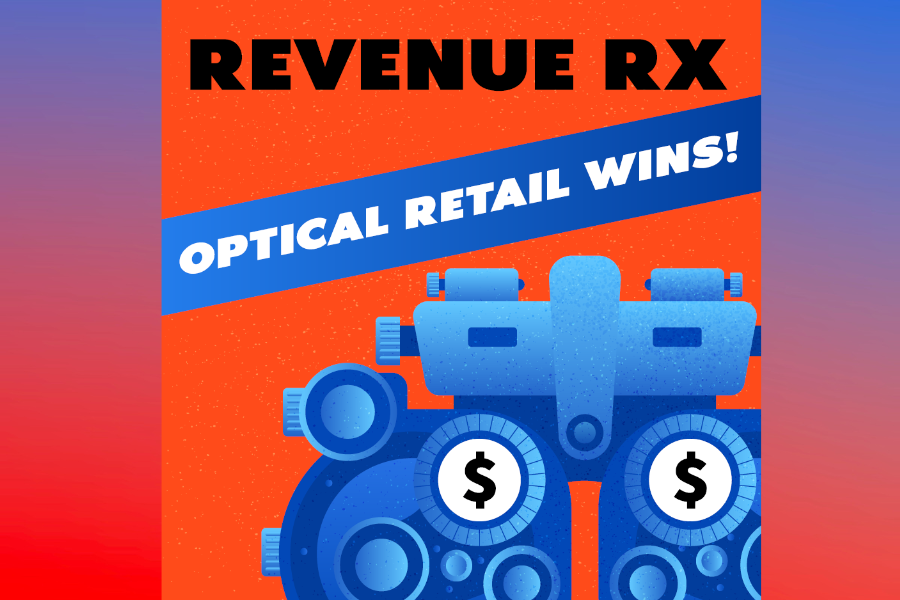
Growth doesn’t always require big investments, flashy marketing campaigns, or risky expansions. In this episode of Revenue RX: Optical Retail Wins, I reveal the top secrets to organic revenue growth—how to maximize the potential already within your business.
This is not about shortcuts. It’s about working smarter, not harder. It’s about refining your current processes, increasing efficiency, and unlocking untapped opportunities. Many optical retailers focus on how to grow, but the real game-changer is what parts of your business you should grow.
If you’re ready to drive higher revenue without increasing your expenses, this episode is for you.

What is Organic Revenue Growth?
Simply put, organic revenue growth comes from within. It’s increasing sales through your existing operations—without borrowing money or investing in expensive marketing.
✔️ Maximizing customer retention—repeat customers spend more and refer others.
✔️ Increasing conversion rates—turning more walk-ins into paying customers.
✔️ Maximizing purchase value—upselling and cross-selling effectively.
✔️ Improving margins—negotiating better deals and adjusting pricing.
✔️ Strategic marketing—targeting the right audience with smart, cost-effective campaigns.
If your revenue growth depends solely on attracting new customers, you’re leaving money on the table. The real key is unlocking revenue from the customers you already have.
Key Strategies for Driving Organic Growth
-
Focus on Conversion Rates
Most businesses think they need more customers to grow. But often, the real solution is better conversion rates—making sure the people already walking into your store actually buy something.
✔️ Track your conversion rate—do you know what percentage of visitors actually make a purchase?
✔️ Improve the hand-off—ensure a seamless transition from eye exam to dispensary.
✔️ Train staff on active listening and guiding customers through the buying journey.
A small increase in conversion rates can lead to massive revenue gains—without spending a dollar on marketing.
-
Pricing Adjustments for Instant Profit Gains
Many optical retailers underprice their products without realizing how much profit they’re leaving behind. Even a small price increase of 5-10% can significantly boost revenue—especially if it’s still below the rate of inflation.
✔️ Adjust pricing strategically—test small increases and monitor customer responses.
✔️ Negotiate better deals with suppliers—get discounts for bulk purchases or early payments.
✔️ Shift the conversation from price to value—customers will pay more for an exceptional experience.
When I ran my optical stores, I quickly realized that increasing my frame prices by just 10% led to a direct increase in my bottom line—with zero additional costs.
-
Leverage Cross-Promotions to Tap Into New Audiences
Not all new business requires expensive advertising. Sometimes, the best strategy is partnering with other businesses that serve the same customer base.
✔️ Team up with a hearing aid clinic to offer free in-store hearing tests.
✔️ Partner with a nail salon or spa to cross-promote eyewear and beauty services.
✔️ List your store in local hotel directories to attract visitors looking for eyewear solutions.
When done right, cross-promotion brings in high-quality customers—at little to no cost.
-
Master the Art of the Upsell and Multi-Pair Sales
Customers are already spending money when they visit your store—so why not maximize their purchase?
✔️ Multi-pair promotions—“Buy one, get a second pair at 50% off” works because customers already trust you.
✔️ Lifestyle-based recommendations—prescribe a second pair for driving, work, or reading.
✔️ Showcase premium lens coatings—customers are willing to invest in features that improve their vision and comfort.
Did you know? One out of every three customers will buy an additional product if asked—but most employees never ask. Changing that one habit alone can increase revenue by up to 30%.
-
Cut Costs Without Cutting Quality
Smart cost-cutting isn’t about doing less—it’s about spending smarter.
✔️ Negotiate with suppliers—I reduced my lab costs by 15% simply by committing to exclusive product lines.
✔️ Reevaluate business expenses—from phone bills to insurance, there’s always room for renegotiation.
✔️ Optimize staff efficiency—consolidate roles, redistribute workload, and reward high performers.
Here’s a simple strategy that worked wonders for me: Reducing my payroll by one employee while increasing wages for the remaining staff. The result? Higher efficiency, happier employees, and lower overall costs.
Final Thoughts: The Secret to Long-Term Growth
The best way to grow a business isn’t just through more customers—it’s through better processes, smarter pricing, and strategic partnerships.
✔️ Increase Revenue by adjusting prices and upselling effectively.
✔️ Increase Profit by controlling costs and renegotiating expenses.
✔️ Increase Sales by improving the customer experience.
✔️ Increase Employee Efficiency through training and operational changes.
✔️ Increase Marketing ROI by understanding the difference between a destination and a location.
✔️ Increase Customer Retention by enhancing the dispensary experience.
Organic growth isn’t magic—it’s strategy. And it works.

Joseph Mireault
Joseph Mireault, Optical Entrepreneur, Business Coach, and Published Author.
Joseph was the owner and president at Tru-Valu Optical and EyeWorx for 16 years. During his tenure, he consistently generated a sustainable $500K in annual gross revenue from the dispensary.
He now focuses on the Optical industry, and as a serial entrepreneur brings extensive experience from a variety of different ventures.
Joseph is also a Certified FocalPoint Business Coach and looks to work directly with ECPs in achieving their goals.
Through his current endeavour, the (Revenue RX, Optical Retail Wins podcast) he shares the challenges and solutions of running an Optical business.
His insights are shared with optical business owners aspiring for greater success in his new book, “An Entrepreneur’s Eye Care Odyssey: The Path to Optical Retail Success.”










